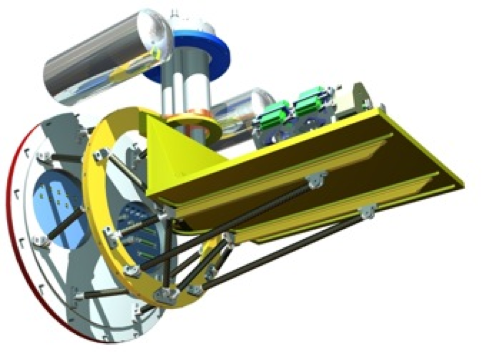Funding from the Canada Foundation for Innovation will help position the University of Lethbridge as a leader in cryogenic testing and open the doors to participation in future space missions.
The $150,000 announced today will go towards the purchase of a cryogenic testing facility (CTF) capable of testing instruments destined for space to ensure they work at very low temperatures. The total cost of the project, led by the U of L’s Dr. David Naylor, is slightly more than $375,000. The province is expected to contribute $150,000 to the project, with the final 20 per cent provided by the prime manufacturer, Quantum Technology, and funding from the European Union.

The Herschel telescope, active from 2009 to 2013, has provided the most detailed observations to date of the far infrared universe where stars and galaxies form. However, Herschel’s sensitivity was limited because of the relatively warm temperature of the telescope itself. Although cooled to approximately 80 Kelvin (-193 C), the telescope contributed a significant background noise component, against which the weak signals from distant galaxies had to be extracted, sort of like having a construction crew working in the background while an orchestra plays a symphony.
Obtaining more detailed pictures of the far infrared universe is possible if the telescope and all the on-board instrumentation can be operated at approximately 4 Kelvin (-269 C). The U of L’s CTF will allow for larger instruments to be tested in extremely cold conditions to ensure they work before being sent into space.
“The CTF will allow us to cool an instrument bigger than a large toaster oven,” says Naylor, a U of L physics professor and Board of Governors Research Chair. “We’ve never been able to do this before. We’ve been able to cool small things but this will allow us to cool very large instruments that will go into space.”
Naylor’s team, which has previously designed and built instrumentation that has gone into space, has the necessary expertise in low-temperature testing.
“There are a number of new space astronomy missions in the pipeline and all of them require that the instrumentation you use be cooled to exquisitely low temperatures,” says Naylor.
The CTF is a complex structure that will be installed in Naylor’s lab in University Hall, with delivery expected sometime this spring.
“Right now, you test components in labs around the world and then you put them all together and you hope the integrated instruments work as you expect,” says Naylor.
The CTF is being designed to provide the most flexibility it can, given the rapid pace of technology development.
“We plan to participate in different space projects but each instrument will be of a different size and shape so this test facility has to accommodate instruments that people haven’t even thought of yet,” says Naylor. “It brings new equipment to our arsenal that doesn’t exist in Canada and positions us to become a partner of choice on future space missions from any space agency.”
Ed Holder, Minister of State (Science and Technology), announced more than $35 million in research infrastructure funding for 37 universities across the country today.
“In our government’s updated Science, Technology and Innovation Strategy, we are making record investments necessary to push the boundaries of knowledge, create jobs and prosperity and improve the quality of life of Canadians. Canada has become a destination of choice for highly talented scientific researchers thanks in part to our support for world class university and college infrastructure which helps train the next generation of Canadian research talent,” says Holder.
Naylor will be talking about investing in space exploration Thursday evening as part of the PUBlic Professor Series. The event, from 7 p.m. to 9 p.m. at the U of L’s Dr. Foster James Penny Building at 324 5 St. S., is free and everyone is welcome to attend.
